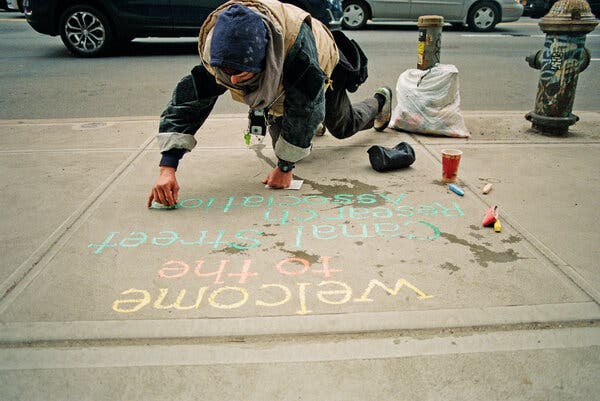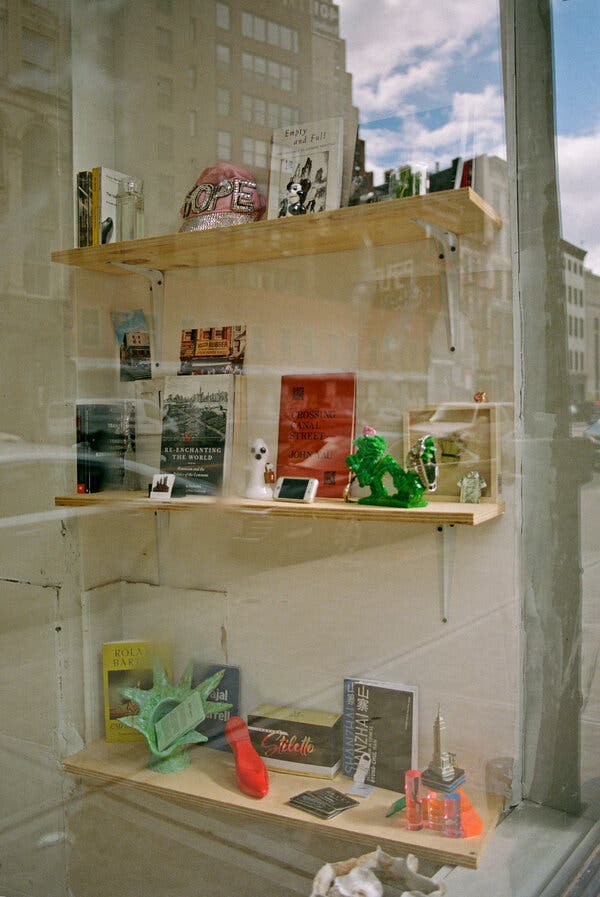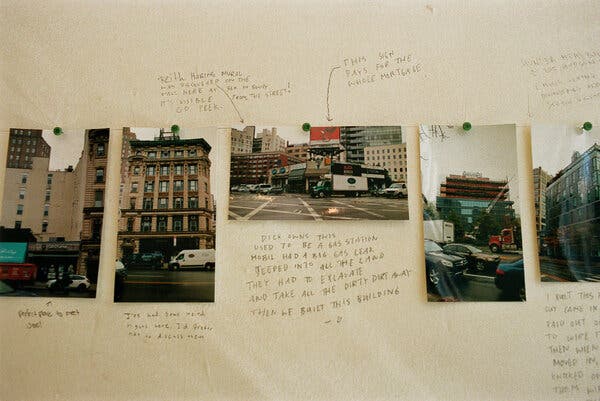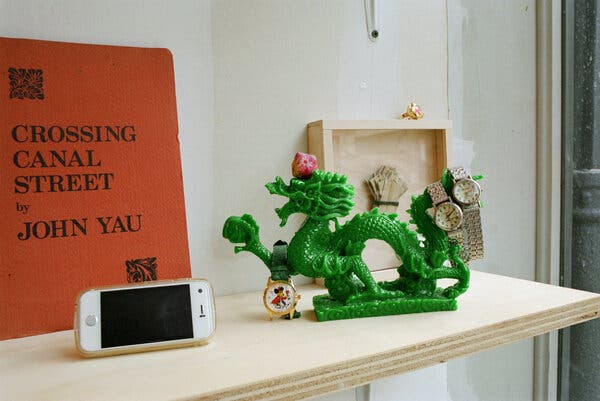The Canal Street Research Association’s creators have lost their leases. But they can still point the way for a new art community. The central part of Canal Street, between the Chinatown waterfront and the mouth of the Holland Tunnel, is a great artery in a utilitarian sense only.
In the early 1800s, water contaminated with industrial waste moved along the present canal into the Hudson River. Some designers envisioned the embankment in Venice-style, but instead, it was roughly paved.
Until recently, this site was not only a home for surplus enterprises – metal, plastic, rubber, glass, textiles but also a magnet for artists. Some of them still live nearby in the attics where they have lived since the 1980s. Otherwise, the area lost its main attraction in 2014 when the Pearl Paint mecca closed.
Leon Ferrer, who works for Canal Rubber, one of the few surviving businesses, says that when New York was a manufacturing city, people of their own business could meet here. He also added that New Yorkers are fortunate to have such an area.

For the powerful main street, Canal Street, there is a problem to be solved and the possibility of reconstruction. First, Bloomberg-era rules obliged homeowners to be held liable for counterfeiting in their buildings. Then the developers bought out the small owners, expecting prosperity. It hasn’t happened yet. And last year, the combination of a pandemic and nailing down windows for fear of unrest only exacerbated the anomie.
And yet here are artists, once again, doing what they do — messing up the story.

For the past several months, a shop window at 327, a dilapidated three-story building between Mercer and Green, has gathered artists, street characters, neighbors like Ferrer, and passers-by in whimsical communication, summoning the ghosts of Canal Street’s past and planting new creative seeds.
It was the temporary home of the Canal Street Research Association, which was invented by artists A. Tatarski and M. Lin, who worked with curators Constance Valenzuela and Jack Radley. It was the physical location of the Shanzhai Lyric art couples project, which views counterfeit or Shanzhai goods, and especially strange clothing texts, as a starting point for a kind of poetry.
This is where the conceptual design becomes concrete: items collected by the artists are displayed alongside others brought by visitors.
Friends put art on display: books on economics, literature, and philosophy. The fashion label Puppets and Puppets has introduced new creations to space. There were designed feature films in the windows with local connections.
One depicts a 2006 Ca performance in which artist Yoko Inoue was loosening American flag sweaters ordered from Ecuadorian artisanal into balls of yarn for sale.

And the project became a memory bank. Tatarsky and Lin walked around Canal Street, photographed each façade, and attached the photos in order to the display case. Visitors write annotations with pencils directly on the wall. The result is a kind of random sociology, combining real estate insights (“This sign pays for all mortgages”), art history factoids (“David Hammons got plastic molds here to sell his snowballs!”), And hangover stories, tattoos, and other incidents.

Crowdsourced signatures focus on defunct places such as Dave’s Luncheonette (“After the Mudd Club at 4:00 AM, all artists will get some chocolate egg creams,” says a note from Chinatown art group veteran Bing Lee); and live ones like Clandestino (“Least obnoxious bar in New York, I think?”).
Everything about the Canal Street Research Association is preliminary.
The space was available because United American Land, the firm that bought the building in 2016 and added to its large portfolio on Canal Street, has organized other landlords with a pop-up model in the past few years to bring attention to art and fashion brands.
But Wallplay, the creative agency that ran the program, shut down in February, leaving the Canal Street Research Association to deal directly with the landlord, unimpressed by their sleazy and smuggling-friendly energy. Jack Laboz, director of United American Land, said the goal was to attract a tenant, such as someone from TriBeCa or Nolita, or an art gallery.
According to him, Tatarsky and Lin shed light on the quarter, and it was interesting to see. However, he pulled the plug out of order. The shop window closes on Wednesday. Artists in their thirties are as local as possible, demonstrating that you don’t have to be alive during the heyday of Basquiat and Blondie to be a true city center.
Tatarsky grew up in the East Village. Lin grew up a few steps from the Walker Street shop window. They have been friends since preschool age.

They said they have always appreciated the informal economy of Canal Street, whose businesses met both their craft and jewelry needs and their mild teenage rebellion.
Tatarsky says that here you can get smuggled bags, get your first fake ID, try to buy a bong – these are slightly illegal actions. Visitors of all generations had similar memories, she said.
During their time at the window, they also befriended Senegalese sidewalk traders of the fake handbags and belts of luxury brands that make up most of the visible retail activity in Canal Street.
They learned that many of these people had their own creative streak – musicians, photographers, griots. Tatarsky said that everyone on Canal Street is an artist.
One salesperson, Khadim Sene, began storing his djembe drums indoors and performing outside of the store with his band Sopé Bakhé. Another, Biran Seck, installed a coffee machine with a stock of coffee with spices that he imports from Senegal.
Khadim once said that bags are for money and coffee and art are for God. Do what you are supposed to do, do spiritual or artistic practice, and these things do not contradict each other. And in Canal Street New York, they are promoted by such density and closeness.

On a cold Saturday, the characters included an elderly woman with a walker on her way to get some craft supplies, a man pulling a cart of rugs for sale, and Day Sinclair, a young artist from Memphis who moved to New York in November with no money or contacts, and worked on the painting. Sinclair said the place was fertile and open enough to enter.
The atmosphere was decrepit but recognizable to connoisseurs. Tom Finkelperl, the city’s former Commissioner for Cultural Affairs, referring to the method in which art is not an object or an exhibition, but a space for interaction, said that when they first walked by, they thought it was a relational art project.
Finkelperl entered with his wife Eugenie Tsai, curator of the Brooklyn Museum. Moments later, the artist Lu Zhang and her husband Herb Tam, curator of the Museum of the Chinese Language in America, entered.
Tam said he was jealous of what they could do here. They have many people who come and study based on Canal Street as a cultural space, a space of memory.

In a few days, it was warm enough for street life. The drummers came out, joined by Babacar Top, a Senegalese choreographer who he said took a stroll down Canal Street to get a taste of the house.
And if the time of the Canal Street Research Association was coming to an end, it was only in this form. They will immediately move to new premises at 264 Canal Street, an upstairs office open by appointment. They said they intend to continue outdoor activities over the next few months as the weather turns warm.
Perhaps it was intended that way. According to them, the Shanzhai concept encourages impermanence. The term came to refer to counterfeit goods, but originally meant “mountain village”, rooted in a Chinese tale in which robbers and other resistance fighters fight a corrupt regime. The story itself has several versions, its authorship is ambiguous.

Likewise, they said, Chinese landscape painting left a blank space on the scroll, welcoming the marks of future writers. Their photographic map of Canal Street was done in the same spirit as the next iteration of the project, with their move to a new location.

























